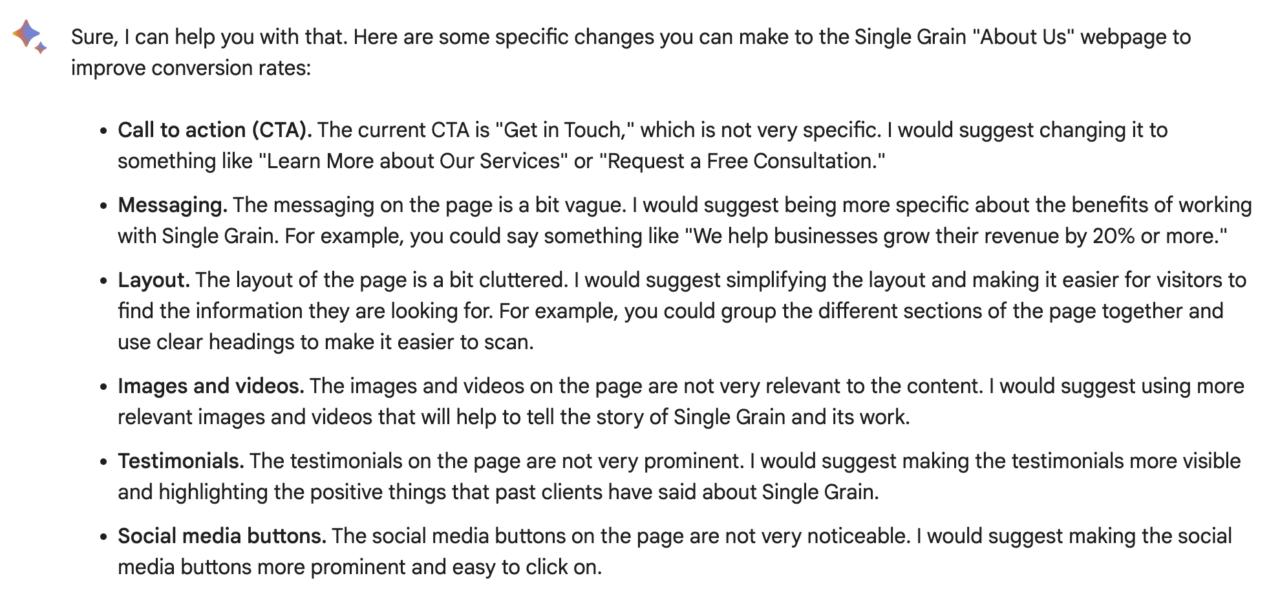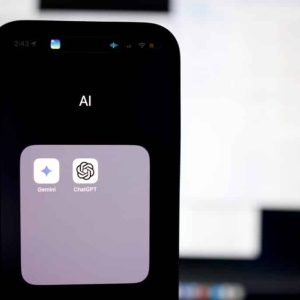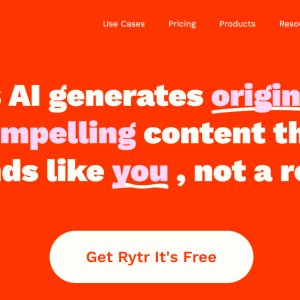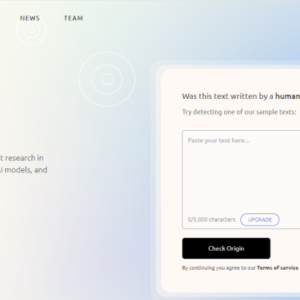In today’s digital age, marketing plays a crucial role in the success of any business. With the ever-evolving landscape of online advertising, it can be overwhelming for entrepreneurs and marketers to keep up with the latest trends and strategies. However, thanks to the advancements in artificial intelligence, Google has introduced an innovative tool called Google Bard that can revolutionize your marketing efforts. By leveraging the power of machine learning and automation, Google Bard can effectively handle various marketing tasks, freeing up your time and resources to focus on other critical aspects of your business. In this article, we will explore the key features and benefits of using Google Bard to streamline your marketing activities and achieve unprecedented success.
- 3 Best AI Tools for Ads Marketers Should Be Aware Of
- Artificial Intelligence in Sales: The Power of Smart Selling Strategies
- Top 5 AI Marketing Agencies That’ll Transform Your Brand
- Best AI Script Writer? 5 Options For Storytelling
- The Rise of Therapy Bots: How AI Is Transforming Mental Health Support
Back in November of 2022, ChatGPT was launched, officially kickstarting the new wave of generative AI solutions for businesses all across the world.
You are viewing: How to Get Google Bard to Do Your Marketing for You
Because it was an open-source platform, it didn’t take long for other big tech companies to swoop in and iterate their own language models to mimic (or even outperform) aspects of ChatGPT.
And that’s where we’re focused on today: Google’s AI, Bard.
In this post, we’ll explore some ways you can ask Google Bard to help you with your marketing ideas, from creating starting points to giving text samples.
If you’ve used ChatGPT, you’ll quickly detect similarities with Bard, but there are some other advantages that we’ll go over.
Ways to Use Bard for Your Marketing Strategy
So how can Google Bard help you with your marketing strategy?
Thankfully, it’s not just a half-hearted novelty spoof a la ChatGPT; it has real potential to be a powerful ally in your marketing arsenal. Here are a few ways we’ve been able to leverage it at Single Grain:
- Tailored Recommendations: Unlike generic advice, Google Bard analyzes your specific webpage to offer personalized suggestions. Whether it’s optimizing call-to-action buttons or refining content, Bard tailors its recommendations to your unique context.
- Conversion Optimization: Bard’s insights can help you improve conversion rates by suggesting effective changes to your website’s elements. From enhancing clarity in your calls to action to refining your messaging, Bard’s guidance is rooted in conversion psychology:

- Efficiency Boost: By quickly transforming podcast episodes into blog posts and providing on-the-spot suggestions, Bard enhances your efficiency. You can produce more content in less time, freeing you up for other critical tasks.
- Idea Generation: While Bard’s suggestions might not be groundbreaking, they do spark creativity. These starting points can lead to new ideas and innovative marketing strategies that resonate with your audience.
- Integration Possibilities: As Bard evolves, it’s likely to integrate with other marketing tools, enhancing its capabilities further. This integration could provide comprehensive insights that span across various aspects of your marketing efforts.
- Democratized Innovation: Bard’s user-friendly interface makes cutting-edge technology accessible to marketers of all technical levels. You don’t need to be a tech guru or have a generous budget to benefit from its potential.
- Strategic Direction: Google Bard’s guidance isn’t just about tweaking elements; it can also help you align your marketing strategies with your business goals. It aids in crafting strategies that are not only strategically effective, but visually appealing, too:

- Real-Time Connectivity: This is a big one. Bard’s real-time connectivity means instant feedback. It’s capable of combing through the web to find the most up-to-date information to give you results that are relevant. This immediate response allows you to fine-tune your strategies swiftly, making your marketing efforts agile and responsive with the newest trends.
(Note: Like ChatGPT, Bard sometimes provides inaccurate or made-up information, particularly when asking it for case studies or research, so always double check!)
For example, when asked what the latest news about Elon Musk and X is, Bard replied:

See more : Writesonic Review: Just How Good is this AI Assistant?
At the bottom of every reply, there is a “Google It” button to verify results. Clicking it takes you to Google, where it shows results like this:

Google Bard isn’t just a tool; it’s a collaborator that offers insights, sparks creativity, and enhances the effectiveness of your marketing efforts.
Granted, it’s still relatively new in the generative AI scene, but it’s already shown us so much promise for what it could be capable of in the future, especially by the fact that it already seems a step ahead of ChatGPT in being able to access real-time data across the internet.
How Google Bard Compares to ChatGPT
Google Bard and ChatGPT are both large language models (LLMs) that are trained on massive datasets of text and code. They can both generate text, translate languages, write different kinds of creative content, and answer your questions in an informative way.
However, there are some key differences between the two models that make Google Bard better in some respects.
Data Sources
One of the biggest differences between Google Bard and ChatGPT is their data sources. Google Bard is trained on a massive dataset of text and code that includes information from the real world, such as news articles, scientific papers and code repositories.
This gives Google Bard a wider range of knowledge and makes it better at answering questions about current events and real-world topics.
ChatGPT, on the other hand, is trained on a dataset of text that is mostly taken from the internet. This means that ChatGPT’s knowledge is more limited (its knowledge cut-off is September 2021), so it can’t answer questions about recent events or topics that are not widely discussed online.
For example, when asking it the same question about Musk and X, it said:

Capabilities
Another difference between Google Bard and ChatGPT is their capabilities.
Bard is better at generating creative text formats, like poems, code, scripts, musical pieces, email, letters, etc., while ChatGPT is better at answering your questions in an informative way, even if they are open ended, challenging or strange. Google Bard is also better at understanding and responding to natural language, while ChatGPT can sometimes be overly literal in its interpretations.
See more : ChatGPT for Online Business: 9 Easy Tips To Sell More & Build Your Brand
Personally, I find that ChatGPT is still a powerful large language model and is as good a choice for generating creative text formats as Bard.
Ease of Use
ChatGPT is a touch more fluid in its presentation and usability than Bard (at this time).
We’ve noticed that it takes a little more prodding to get the right answers you need out of Bard, but once you figure out the key to crafting the right prompts with Bard, you can get some seriously solid material out of it. A lot of it will read very clean and original, compared to ChatGPT, which also writes cleanly but is often ridden with informational redundancy and repetitious phrasing.
Overall, Google Bard is superior to ChatGPT in some areas, like real-time internet access and aspects of its interface, but it is still clunky in a lot of areas and requires a bit more finesse to get the right types of answers from your prompts.
Availability and Pricing
Google Bard is currently only available in a limited beta release, while ChatGPT is available to the public. Google has said that they plan to make Bard more widely available in the future.
And as for pricing, Bard is currently free to use, while ChatGPT has a paid tier (GPT-4, which is $20/month) that offers additional features.
The reason these tools are free or inexpensive to use is because we, the people using them, are part of a gigantic focus group intended to help these models grow and learn.

Last Thoughts on Google Bard for Your Marketing Efforts
While Bard may not be a panacea, it’s fast becoming a more elegant solution to generative AI assistance that’s backed by real-time data and information.
If you’re a small business with limited marketing resources, it’s a no-brainer to tap into these language models to generate new ideas, help you with research, and formulate strategic approaches to optimize and refine your marketing plan.
At the very least, Bard will be able to reference competitors of yours in order to come up with comparable ideas to elevate your own brand. So for that reason alone, it’s probably worth exploring to get a better idea of your competitors’ marketing activity!
Repurposed from our Marketing School podcast.
That’s a wrap on “How to Get Google Bard to Do Your Marketing for You” We hope you’ve found a trove of useful insights and fresh perspectives. Your opinions and ideas matter to us—join the conversation below and share your take! Hungry for more tech insights? Dive into our diverse collection of articles where innovation meets practicality. Discover More AI Softwares.
Stay in the loop with the latest in AI and tech – your journey into the digital future continues at wubeedu.com.
#Google #Bard #Marketing
Source: https://wubeedu.com
Category: AI





